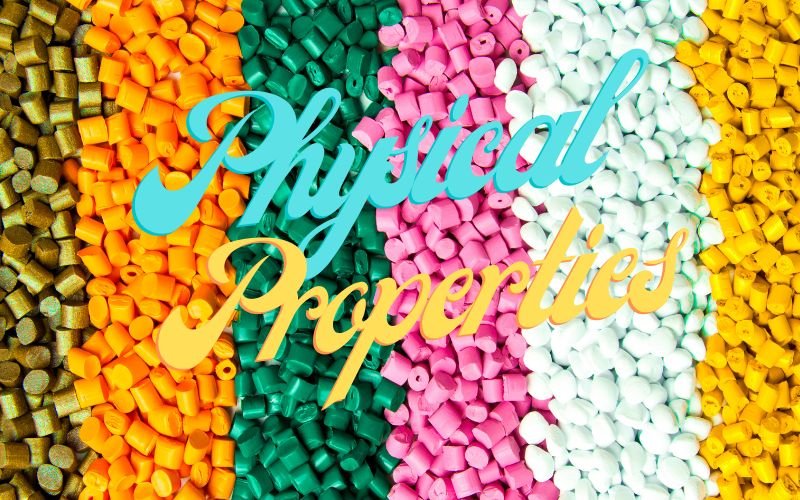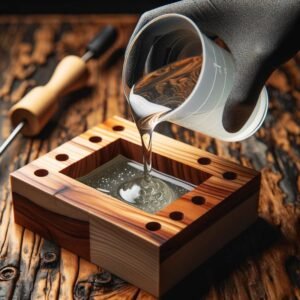Introduction
Hey there! Ready to unravel the mysteries of plastics? From the smartphone in your hand to the dashboard in your car, plastics are everywhere. And today, we’re diving deep to uncover what makes them tick.
Why This Matters
Understanding plastic properties isn’t just for scientists. It’s for anyone who uses, well, anything. With sustainability and innovation at the forefront, knowing your plastics is more than just handy—it’s essential.
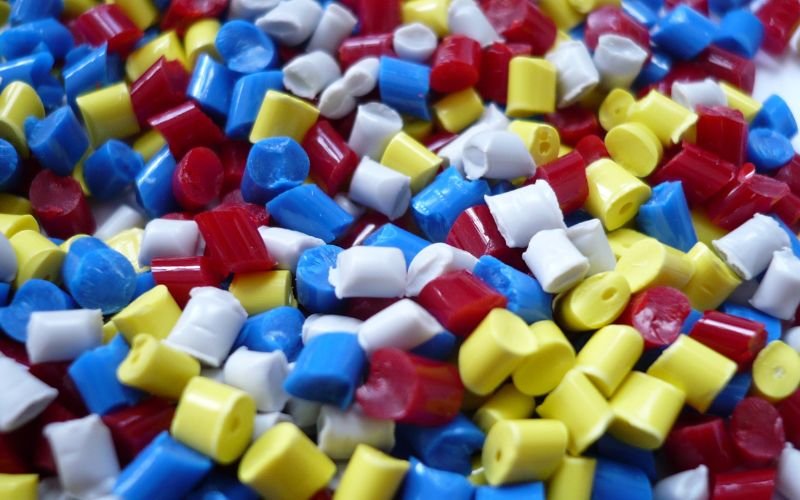
Plastic Types & Their Traits
Plastics aren’t a one-size-fits-all deal. Different types have unique features tailored for specific tasks. Let’s break them down.
Snapshot: Physical Properties of Top Plastics
| Plastic Type | Density | Melting Point | Strength | Where You’ll Find It |
|---|---|---|---|---|
| Polyethylene (PE) | 0.91-0.96 | 115-135°C | 20-40 MPa | Shopping bags, bottles |
| Polypropylene (PP) | 0.90 | 130-171°C | 25-40 MPa | Lunch boxes, car parts |
| PVC | 1.3-1.45 | 100-260°C | 40-80 MPa | Plumbing, vinyl flooring |
| Polystyrene (PS) | 1.04-1.07 | 100-270°C | 40-55 MPa | Coffee cup lids, packaging |
| PET | 1.38-1.39 | 250-260°C | 50-75 MPa | Soda bottles, textiles |
| Polycarbonate (PC) | 1.2 | 155-297°C | 55-75 MPa | Eyeglasses, DVDs |
| Polyurethane (PU) | 1.20-1.25 | 130-210°C | 20-60 MPa | Insulation, mattresses |
| PTFE | 2.2 | 327°C | 25-35 MPa | Non-stick pans |
| ABS | 1.05-1.07 | 105-125°C | 40-70 MPa | LEGO bricks, keyboards |
Deep Dive: The Stories Behind the Stats
Each plastic type has its unique story, properties, and applications. Let’s get to know them better:
Polyethylene (PE)
The Lowdown: The most common plastic around. Lightweight, resistant to moisture, and incredibly versatile.
Spotlight: Those squeezable ketchup bottles and your grocery bags? That’s PE in action.
Polypropylene (PP)
The Lowdown: Resilient and versatile. Known for its high-temperature resistance and fatigue durability.
Spotlight: Your microwave-safe containers and car battery cases? All hail PP.
PVC (Polyvinyl Chloride)
The Lowdown: Adaptable and durable. Can be both rigid and flexible, making it a favorite in construction and fashion.
Spotlight: The pipes in your home and your stylish rain boots? PVC’s magic.
Polystyrene (PS)
The Lowdown: Lightweight and moldable. The go-to for insulation and protective packaging.
Spotlight: Your coffee cup lid and the protective packaging for electronics? PS is the unsung hero.
PET (Polyethylene Terephthalate)
The Lowdown: Clear and strong. The superstar of the beverage industry.
Spotlight: Those clear soda bottles and your comfy polyester shirts? PET’s contribution.
Polycarbonate (PC)
The Lowdown: Tough and transparent. Known for its optical clarity and impact resistance.
Spotlight: Your eyeglass lenses and DVDs? PC makes it possible.
Polyurethane (PU)
The Lowdown: Flexible and durable. A favorite for foams and sealants.
Spotlight: Your comfy mattress and the sealant in your bathroom? PU’s handiwork.
PTFE (Polytetrafluoroethylene)
The Lowdown: Non-reactive and slippery. The non-stick hero.
Spotlight: Your non-stick pans and certain lubricants? Thank PTFE.
ABS (Acrylonitrile Butadiene Styrene)
The Lowdown: Strong and glossy. A favorite for toys and certain automotive parts.
Spotlight: Those colorful LEGO bricks and your shiny keyboard keys? ABS in action.
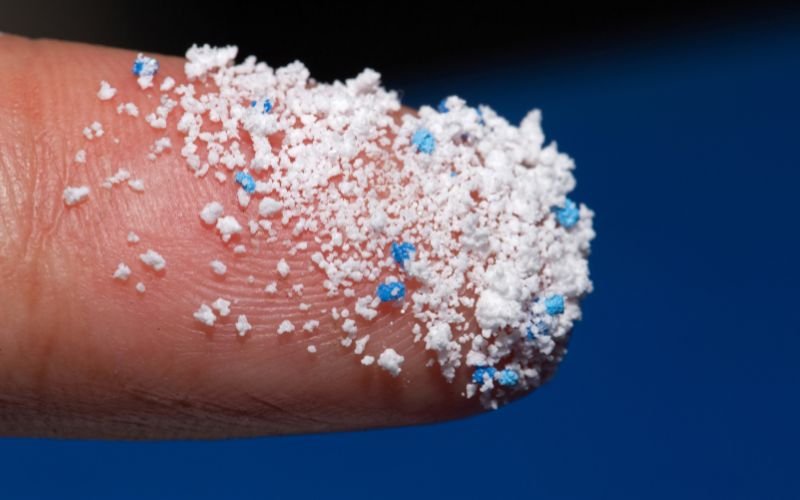
What Influences Plastic Properties
Plastics can be tweaked and tuned in countless ways. Let’s uncover the factors that shape their characteristics.
Additives: The Game Changers
From making plastics sun-resistant to giving them vibrant colors, additives are the secret sauce.
- UV Stabilizers: Protect plastics from sun damage.
- Flame Retardants: Reduce flammability.
- Plasticizers: Boost flexibility.
Manufacturing: Crafting the Perfect Plastic
The way plastics are made can dramatically alter their properties.
- Injection Molding: Great for detailed shapes, but can introduce stress.
- Blow Molding: Perfect for hollow items like bottles.
- Extrusion: Ideal for creating long continuous products like pipes.
Environment: Plastics in the Real World
Real-world conditions can change the game for plastics.
- Temperature: Some plastics can’t handle the heat (or cold).
- Humidity: Water can be a plastic’s best friend or worst enemy.
- Chemical Exposure: Certain plastics resist acids but might degrade with solvents.
Recyclability: A Twist in the Tale
In the age of sustainability, recycled content is increasingly common in plastic products. Recycled plastics might have slightly different properties due to previous processing or aging.
- Post-Consumer vs. Post-Industrial: Where the recycled material comes from can affect quality.
- Contaminants: Recycled plastics might contain impurities that affect their properties.
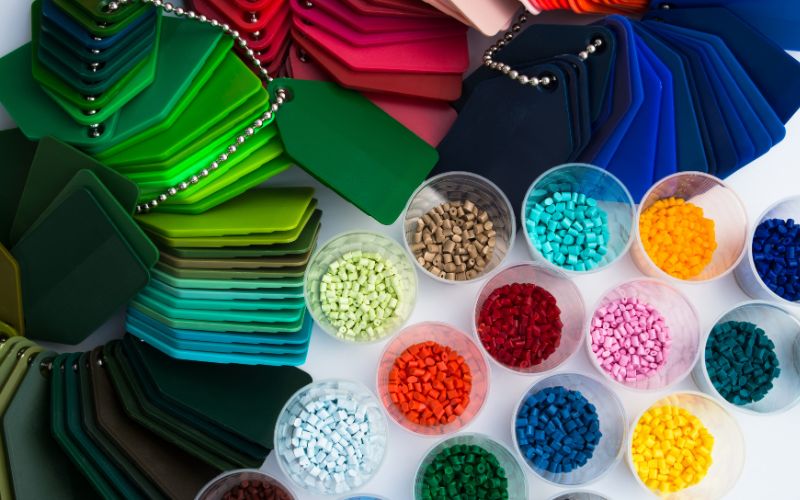
Sustainability: Plastics in the Green Age
Plastics and sustainability? It’s a hot topic. While plastics offer numerous benefits, their environmental footprint is undeniable. Biodegradable plastics, recycling initiatives, and the move towards a circular economy are all part of the equation to make plastics more planet-friendly.
Biodegradable vs. Traditional
- Biodegradable Plastics: Nature-friendly, but not always as durable.
- Traditional Plastics: Long-lasting, but can be an environmental headache.
Recycling: Giving Plastics a Second Chance
- Champions of Recycling: PET and HDPE lead the pack.
- The Recycling Underdogs: PVC and PS face challenges but have potential.
| Type of Plastic | Biodegradable | Highly Recyclable | Common Uses |
|---|---|---|---|
| PET | No | Yes | Bottles |
| HDPE | No | Yes | Grocery Bags |
| PVC | No | No | Pipes |
| PLA | Yes | No | Food Packaging |
Circular Economy: A New Hope
The concept of a circular economy aims to minimize waste and make the most of resources. Here, products like plastics are recycled, repaired, or refurbished to extend their lifecycle.
- Modular Design: Creating plastic products with disassembly in mind can make it easier to recycle them later.
- Upcycling: Converting waste materials into new materials or products of better quality.
Consumer Responsibility
Finally, the onus isn’t just on manufacturers; consumers can make informed choices too.
- Mindful Consumption: Opt for products with less or recyclable packaging.
- Local Recycling Codes: Familiarize yourself with the recycling codes in your area to ensure you’re disposing of plastics properly.
Practical Considerations for Industries
From packaging and construction to healthcare and electronics, plastics have found a home everywhere, thanks to their unique properties and adaptability.
Smart Spending: Quality vs. Cost
Imagine having a super-plastic that can endure the Sahara’s heat and Antarctica’s cold. Sounds cool, right? But do you really need it? It’s all about getting the best bang for your buck.
- Elite Plastics: Perfect for niche needs but might pinch your pocket.
- Everyday Plastics: Great for bulk needs without breaking the bank, but might not have those “special” features.
Rulebook Rundown: Staying in the Clear
Different industries, different rules. Especially when it comes to plastics. Whether you’re in food, pharma, or cars, you’ve got guidelines to follow.
- Foodie Alert: If it touches food, it better have the FDA’s nod.
- Safety First: In a fire-prone scenario? You’ll need flame-resistant plastics.
Eco-Equation: The Green Side of Plastics
Your plastic choice isn’t just about what it can do. It’s also about its impact on Mother Earth.
- Clean Creation: Go for plastics birthed from eco-friendly processes.
- The Afterlife: Think about where your plastic will end up. Recycle? Landfill? Plan ahead.
Supply Chain Strategy: Getting Your Plastic On Time, Every Time
It’s not just about choosing the right plastic. It’s about getting it when you need it, where you need it.
- Home vs. World: Local sources cut down transport emissions but might limit variety.
- Stockpile or Streamline?: Bulk buys save money, but just-in-time sourcing saves space.
Future-Forward: Staying Ahead in the Plastic Game
The world of plastics is ever-evolving. New materials, new methods. Are you keeping up?
- Tech Watch: Invest in research. Today’s experiment could be tomorrow’s game-changer.
- Feedback Loop: Listen to users. Their insights could guide your next plastic choice.
Conclusion
From the everyday items we use to the innovations that drive industries, plastics are undeniably integral. They’re a testament to human ingenuity, offering versatility and functionality in myriad applications. As we move forward, the challenge lies in harnessing their potential while treading lightly on our planet.

